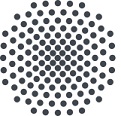Bitte benutzen Sie diese Kennung, um auf die Ressource zu verweisen:
http://dx.doi.org/10.18419/opus-13061
| Autor(en): | Pustogow, Andrej Saito, Yohei Löhle, Anja Sanz Alonso, Miriam Kawamoto, Atsushi Dobrosavljević, Vladimir Dressel, Martin Fratini, Simone |
| Titel: | Rise and fall of Landau’s quasiparticles while approaching the Mott transition |
| Erscheinungsdatum: | 2021 |
| Dokumentart: | Zeitschriftenartikel |
| Seiten: | 8 |
| Erschienen in: | Nature communications 12 (2021), No. 1571 |
| URI: | http://nbn-resolving.de/urn:nbn:de:bsz:93-opus-ds-130804 http://elib.uni-stuttgart.de/handle/11682/13080 http://dx.doi.org/10.18419/opus-13061 |
| ISSN: | 2041-1723 |
| Zusammenfassung: | Landau suggested that the low-temperature properties of metals can be understood in terms of long-lived quasiparticles with all complex interactions included in Fermi-liquid parameters, such as the effective mass m⋆. Despite its wide applicability, electronic transport in bad or strange metals and unconventional superconductors is controversially discussed towards a possible collapse of the quasiparticle concept. Here we explore the electrodynamic response of correlated metals at half filling for varying correlation strength upon approaching a Mott insulator. We reveal persistent Fermi-liquid behavior with pronounced quadratic dependences of the optical scattering rate on temperature and frequency, along with a puzzling elastic contribution to relaxation. The strong increase of the resistivity beyond the Ioffe-Regel-Mott limit is accompanied by a ‘displaced Drude peak’ in the optical conductivity. Our results, supported by a theoretical model for the optical response, demonstrate the emergence of a bad metal from resilient quasiparticles that are subject to dynamical localization and dissolve near the Mott transition. |
| Enthalten in den Sammlungen: | 08 Fakultät Mathematik und Physik |
Dateien zu dieser Ressource:
| Datei | Beschreibung | Größe | Format | |
|---|---|---|---|---|
| s41467-021-21741-z.pdf | 3,13 MB | Adobe PDF | Öffnen/Anzeigen |
Diese Ressource wurde unter folgender Copyright-Bestimmung veröffentlicht: Lizenz von Creative Commons


